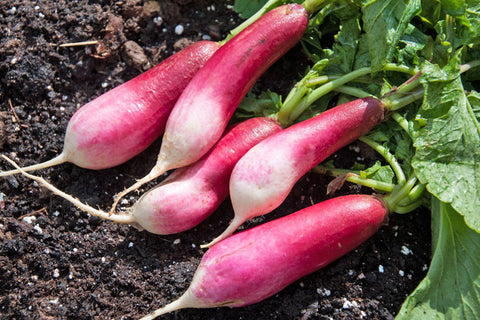
Best Easy to Grow Vegetables for Beginners
Growing your own vegetables is fun, healthy, and rewarding. But it can be daunting to know how and where to start. Should you start with beans or onions? Courgettes or asparagus? While it’s a good idea to grow what you like to eat, it’s also worth paying attention to how easy a crop is to grow.
Do you dream of harvesting your own homegrown foods, but just don’t know where to start? Browse our below list of the best beginner vegetables to grow.
Beetroot

Beetroot can be sown directly into shallow drills in the soil. They are high in fiber and rich in vitamins A and C, are easy to grow from seed, and benefit from loose soil. It has good resistance to bolting (running to seed), making it a perfect choice for beginner growers. It produces medium-sized roots, with smooth skin and deep red flesh. Aim to plant them in spring and late summer, and note that they prefer loamy, acid soil and are ready to harvest within a few weeks.
Salad leaves

Salad leaves like rocket and oak-leaf lettuce can be sown in pots and harvested on a cut-and-come-again basis, so you don’t need to tend the plants for long. If you want to make a colorful salad, buy various salad leaf varieties to sow together to make a colorful salad.
Tomatoes

Tomatoes are easier to grow than cordon varieties, as they don’t need supporting and their side shoots do not require pricking out. Whether you like big, beefy tomatoes or tiny cherry and grape types, these heat-loving tropicals are simple to grow in a hanging basket or pot, both in a greenhouse and outdoors. Plant cages help keep them healthy and make harvests easier.
Potatoes

Potatoes are easy to grow – simply plant them in the ground or an old compost bag, cover the leaves with soil when they first appear (known as ‘earthing up’), and harvest a few weeks later. Early potatoes (planted in early April) can be harvested in July before hot, humid weather increases the threat of potato blight. ‘Red Duke of York’ is an attractive red-skinned variety and ‘Anya’ has long tubers with a nutty taste.
Peas

Peas can be easy to grow. Choose a compact variety, such as ‘Half Pint’, that doesn’t require staking. They can even be grown in a container. The young tips can be trimmed and added to salads for a delicious spring treat, and are followed by flowers and pods.
Carrots

It’s no secret that carrots are a good source of vitamin A. To grow well, carrots need soft soil that’s well-drained. A raised bed is a good idea. Carrots will survive light frosts, making them a great crop to start your garden in the early spring. Nevertheless, carrots are simple and fun to grow.
Radishes

Radish seeds are fairly large, so they are easy to sow and don’t need thinning out. They’re ready to harvest within just a few weeks. Whether you prefer them raw in salads or soups, radishes are a versatile root vegetable. Like carrots, it’s best not to overcrowd the seeds and aim for loose dirt. Radish ‘French Breakfast’ has crisp, oval, red, and white roots while ‘Scarlet Globe’ is bright scarlet with white flesh.
Chillies

Whether you are a brown thumb or a gardening expert – either way growing chilly is perfect for every gardener. Chilies grow well in containers on a window sill or in a warm, sunny position outside. They have similar growing requirements to tomatoes and will continue to crop until the first frosts in autumn. Water daily till the plant flowers and reduce the frequency of watering after flowering happens. Harvest fresh chilies when fruited.
Bell Peppers

Bell peppers start out green, but they mature to red, orange, yellow, purple, or even chocolate brown. Pick them early and they’ll still color up, but they won’t get any sweeter. Make sure you opt for well-drained soil that’s rich in organic matter. Warm temperatures are key for growing this tasty vegetable, which can enhance salads, pasta, meat dishes, and much more.





Leave a comment